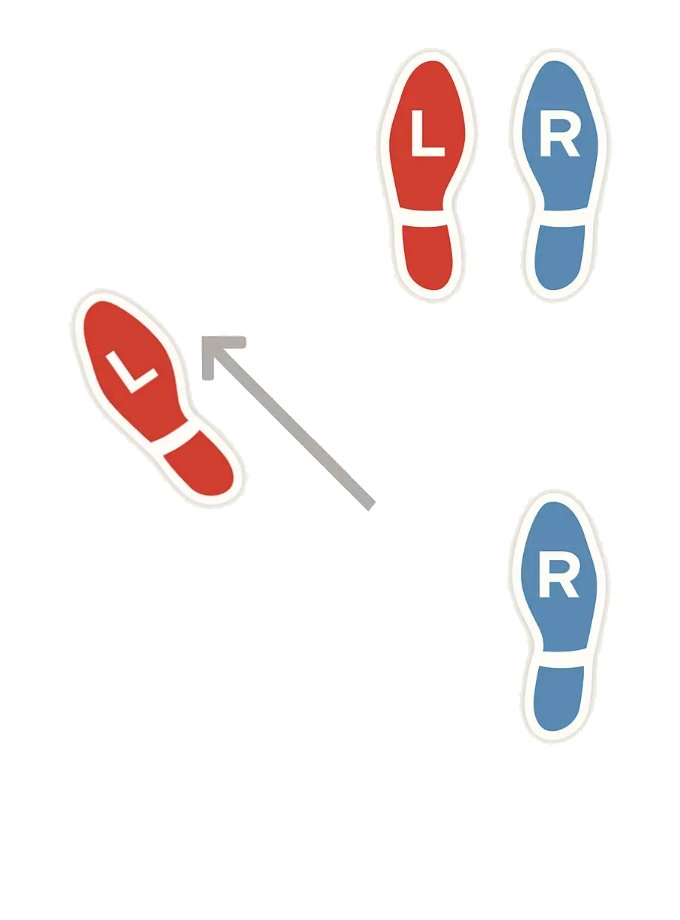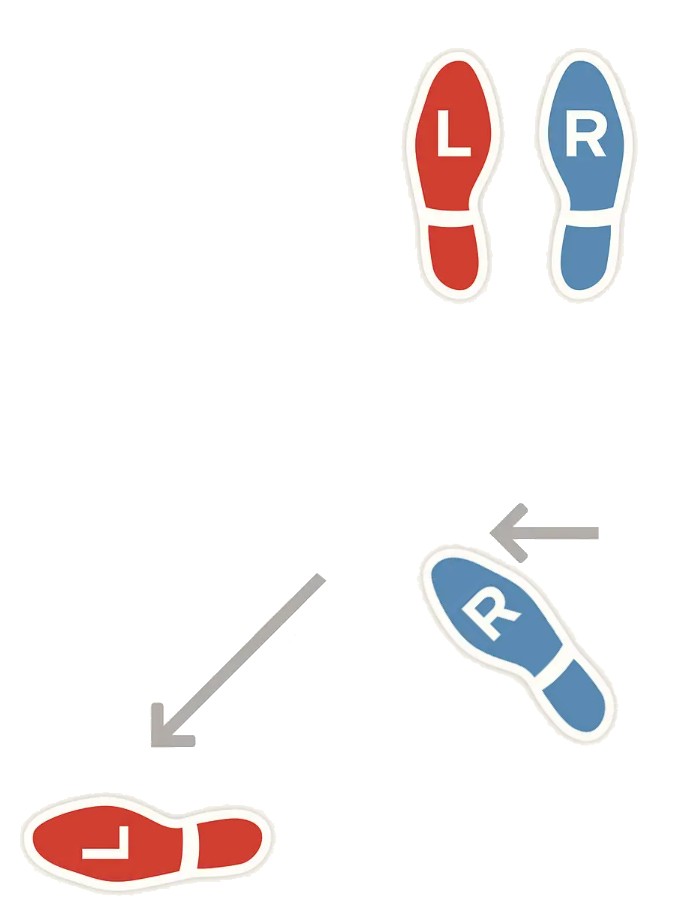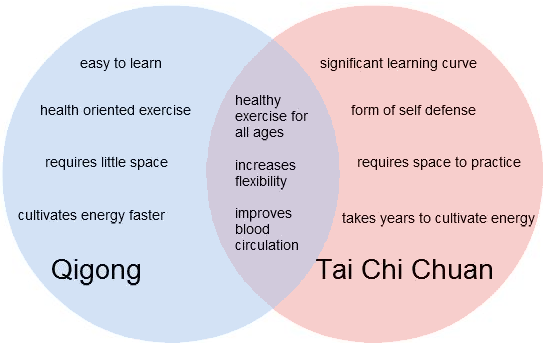Qi Gong vs Tai Chi
Qi Gong and Tai Chi are strongly related:
- Qi Gong focuses on gathering and developing Qi energy (pronounced as "Chi")
- Tai Chi (T'ai chi ch'uan) is based on martial arts and focuses on utilising and expending the energy gathered through Qi Qong.
The acknowledged health benefits of practicing Qi Gong and Tai Chi include:
- Relieving the physical affects of stress
- Improving mind and body integration
- Promoting deep breathing and blood flow
- Reducing blood pressure
- Relieving arthritis pain
- Improving lower body and leg strength
- Improving balance and falls prevention
Stepping in Qi Gong and Tai Chi
Qi Gong
 Stepping in Qi Gong |
Because Qi Gong is and excercise, stepping is mainly to the diagonal to achieve a "Bow Stance". The body weight is shifted to the right, the left foot is "released", and a step is taken out at 45° with no adjustment of the rear foot.
This is the ideal position for stability, and the ability to transfer the body weight forward and backward.
Tai Chi
 Stepping in Tai Chi |
Tai Chi is a "form" or set of movements based on martial arts, and although sometimes a diagonal step is made similar to Qi Gong, most times the body is rotated 90° for a step to the left or right.
In this example, the body weight is again shifted to the right and the left foot is "released", however the left foot is taken forward AND to the left so the the feet are initially at 90°. As the body settles, the right foot is rotated 45° to the left resulting in a "Bow Stance" again.
Example of Qi Gong Practice
 Qigong classes involve the repetition of gentle exercises 4 to 6 times with the emphases on breathing, stretching and relaxation.
Qigong classes involve the repetition of gentle exercises 4 to 6 times with the emphases on breathing, stretching and relaxation.
Click on the image to see an example video of the Shi Ba Shi (18 movements) Qi Gong on Youtube.
Example of Tai Chi Practice
 Tai Chi classes commence with a Qi Gong warmup followed by a Tai Chi routine which comprise a fixed set of movements which are based on martial arts but are practiced much more slowly.
Tai Chi classes commence with a Qi Gong warmup followed by a Tai Chi routine which comprise a fixed set of movements which are based on martial arts but are practiced much more slowly.
Click on the image to see an example video of the Yang style 8 Form on Youtube.

